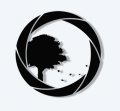داریوش خان تست IR در زمینه داینامیک رنج کاملا وابسته به نویز یا به اصطلاح خودشان noise thresholds هست. تست بر اساس سیستم سنجش Imatest است. توضیحاتش جالب هست. نگاهی بیندازید:
با خواندن توضیحات متوجه می شویم داینامیک رنج در یک عدد خلاصه نمی شود و حتی در برخی موارد نیاز به توضیحاتی همچون توضیح زیر نیز وجود دارد. مواقعی که نرم افزار توانایی تشخصیص مواردی همچون مورد سنسور 600d را ندارد:Dynamic Range
A key parameter in a digital camera is its Dynamic Range, the range of brightness that can be faithfully recorded. At the upper end of the tonal scale, dynamic range is dictated by the point at which the RGB data "saturates" at values of 255, 255, 255. At the lower end of the tonal scale, dynamic range is determined by the point at which there ceases to be any useful difference between adjacent tonal steps. Note the use of the qualifier "useful" in there: While it's tempting to evaluate dynamic range as the maximum number of tonal steps that can be discerned at all, that measure of dynamic range has very little relevance to real-world photography. What we care about as photographers is how much detail we can pull out of the shadows before image noise becomes too objectionable. This, of course, is a very subjective matter, and will vary with the application and even the subject matter in question. (Noise will be much more visible in subjects with large areas of flat tints and subtle shading than it would in subjects with strong, highly contrasting surface texture.)
What makes most sense then, is to specify useful dynamic range in terms of the point at which image noise reaches some agreed-upon threshold. To this end, Imatest computes a number of different dynamic range measurements, based on a variety of image noise thresholds. The noise thresholds are specified in terms of f-stops of equivalent luminance variation in the final image file, and dynamic range is computed for noise thresholds of 1.0 (low image quality), 0.5 (medium image quality), 0.25 (medium-high image quality) and 0.1 (high image quality). For most photographers and most applications, the noise thresholds of 0.5 and 0.25 f-stops are probably the most relevant to the production of acceptable-quality finished images, but many noise-sensitive shooters will insist on the 0.1 f-stop limit for their most critical work.مثلا برای 70d بر اساس "دامنه نویزی" مختلف اعداد متفاوتی برای داینامیک رنج به دست می آید:
Canon T3i Review: Full Review - ImagingAlso, the extreme highlight recovery being performed by ACR here would likely produce color errors in strong highlights of natural subjects.
نمایش نتایج : از شماره 441 تا 450 , از مجموع 486
موضوع: Nikon D7100 VS Canon 70D
-
Thursday 12 February 2015, 22:43 #441

ویرایش توسط Nima Sadigh : Thursday 12 February 2015 در ساعت 23:05
"تو قسمتی از جهان نیستی، تو خود جهان هستی"
-
Thursday 12 February 2015, 23:23 #442

از توضیحاتتان ممنونم
بنده در خصوص بحث بازیافت مناطق تاریک و روشن و پوش و پول کردن صحبت کردم. صحبت من در خصوص وجود یا عدم وجود نویز در حالت عکاسی عادی نبود. مثالی هم از D750 زدم. به نظرم تعریف داینامیک رنج هم روشن است و دامنه تقسیمات حداکثر و حداقل روشنائی قابل ثبت توسط فیلم یا سنسور را مشخص می کند. فیلم عکاسی نویز ندارد (نویز فقط مخصوص سنسور دیجیتال است) ولی داینامیک رنج دارد.
ارادت
-
Friday 13 February 2015, 04:23 #443

تعریف شما از دینامیک رنج کاملا درست است اقای چگینی ولی اینکه ارتباطش با ریکاوری سایه ها چیست خدمتتان عرض کنم که فرض کنید از منظره ای عکس میگیرید که رنج نوری وسیعی دارد که بیشتر از محدوده بالایی دینامیک رنج است. در این حالت میتوانید با جبران نوردهی بسمت منفی قسمتهای های لایت را در محدوده قابل ثبت سنسور قرار دهید ولی عملا قسمتهای تون میانی و سایه ها به سایه تبدیل میشوند. حالا اگر بدنه توانایی ثبت دینامیک رنج زیادی را در سایه ها داشته باشد خیلی راحت میتوانید آن سایهها را با نویز و دیتیل قابل قبول روشن کنید. نتیجه اش مثلا این میشود که فرضا با جبران نوردهی -2 عکس میگیرید با دو استاپ افزایش سایهها در فتوشاپ سایه های 7000دی همان کیفیت سایههای دی60 را میدهد منتها در سمت هایلایت دو استاپ بهتر دیتیل ثبت شده است. البته این مقدار برای سایهای خیلی سیاه است نه همه طیف! در سمت هایلات طیف اختلاف تغریبا صر میشود. پس انتظار این را هم نداشته باشید که با این تکنیک و شیفت +2 در فتوشاپ، همه طیف طیف میانی و سایه ها به کیفیت دی60 و بدونه شیفت باشد.
ویرایش توسط m.daneshpayeh : Friday 13 February 2015 در ساعت 05:13
مهدی دانشپایه
http://500px.com/daneshpayeh
هر گونه انتقاد، پیشنهاد، ویرایش، ایراد، نق نق، غرغر و غیره کاملا آزاد است.
-
Friday 13 February 2015, 10:56 #444كاربر بسیار فعال


- تاریخ عضویت
- September 2014
- محل سکونت
- اهواز
- نوشته ها
- 1,515
- تشکر شده
- 6873
- تشکر کرده
- 3931

جناب دانش پایه، سوالی داشتم. هرچند ارتباطی به تاپیک نداره منتها دیدم بحثش بالاس.
اگر بخاطر تنبلی، عدم وجود سه پایه، حرص ظرفیت مموری و یا.... مجبور به ثبت تک شات شدیم آن هم برای عکسی با دینامیک رنج بالا، فرضاً ترجیح بر ثبت هایلات با -2 ای وی و ریکاوری سایه هاست یا ترجیح بر ثبت شادو با +2 و ریکاوری هایلایت ها ؟؟
ریکاوری کدامیک با دردسرکمتر و نویز کمتر است ؟
اصلا من بیسواد......جغرافیای زندگی، دو چیز را تعیین می کند: یکی دین، دیگری سبک عکاسی!
اینستاگرام
-
Friday 13 February 2015, 11:08 #445

سلام جناب دانشپایه عزیز، بحث بنده در خصوص ارتباط داینامیک رنج و قابلیت بازیافت مناطق تاریک و روشن نیست. به نظر من مفهوم داینامیک رنج در این است که اگرداینامیک رنج منظره در حد داینامیک رنج دوربین باشد و عکاس به درستی نورسنجی کرده باشد، دوربین قاعدتاً باید کل طیف های روشنائی موجود در منظره را ثبت کرده باشد و قاعدتاً نباید نیازی به بازیافت مناطق روشن و تاریک باشد. اگر هم داینامیک رنج منظره ببش از حد دوربین باشد، هیچ بازیافتی قادر به ایجاد داینامیک رنج منظره نخواهد بود.
به نظرم بحث بازیافت بیشتر در خصوص مواردی مطرح است که نورسنجی به درستی انجام نشده باشد یا عکاس بخواهد به منظور ویرایش هنری، در تصویر منظره دخل و تصرف نماید.
ارادت
-
Friday 13 February 2015, 11:33 #446

داریوش خان منظورتان را متوجه شدم
اما همچنان روی این مسئله ابهام دارم و برای خودم به سوالی تبدیل شده است. دلیل ابهامم هم این هست که خروجی دوربینها بدون پوش کردن تقریبا به چشم ما یکی می آید(مثلا روی همین dp). آیا نرم افزارهایی که داینامیک رنج را تشخیص می دهند خودشان فایلها را تحت فشار قرار نمی دهند؟ فکر می کنم باید به سایت نرم افزار Imatest مراجعه کنیم و شیوه تستشان را بخوانیم. البته قبلا یک بار سری به سایتشان شده بودم ولی چیزی عایدم نشد. انشالا این دفعه به جایی برسم... و بحث را به زودی در همین تاپیک ببندیم.
ممنون بابت باز کردن بهتر مطلب و گوشزد سوء تفاهمم"تو قسمتی از جهان نیستی، تو خود جهان هستی"
-
Friday 13 February 2015, 11:55 #447

در عکاسی منظره تقریبا همیشه طیف روشنایی و تاریکی منظره خارج از توان سنسور های دیجیتال است پس سنسور با رنج بالاتر توان ثبت جرئیات بیشتری از صحنه را خواهد داشت. در واقع هر چه این رنج بیشتر باشد صحنه دقیق تر ثبت می شود.بعدا در هنگام تبدیل و بسته به مدیای مربوطه به طور مثال JPG یا چاپ این رنج به رنج مدیا مربوطه نگاشت می شود(tone mapping). در واقع به طور مثال ریکاوری سایه به معنی نگاشت بخشی از قسمت تاریک فایل RAW به قسمتهای کمی روشن تر فایل JPEG است تا این جزئیات قابل نمایش باشند.
تقریبا تمامی عکسها در تاپیک منظره در قسمتهای روشن و تاریک ریکاور شده اند (با وجود صحیح بودن نورسنجی)و این عمل به یک استاندارد تبدیل شده هرچند در برخی مواقع زیاده روی هایی هم صورت گرفته.
Tone mapping - Wikipedia, the free encyclopedia"If Your pictures aren't good enough, you're not close enough"محمدعلی جعفرزادهROBERT CAPA
-
Friday 13 February 2015, 12:01 #448

یه نمونه عکس از زمان غروب داشتم که برای بازیابی نقاط تاریک یه ادیت معمولی خورده. اینکه میگم معمولی چون تو ادیت حرفه ایی نیستم!
در حد بالا و پایین کردن اسلایدرها بلدم!
عکس با -1 EV گرفته شده.
عکس اصلی
IMG_1204.jpg
عکس ادیت شده
IMG_1204-Edit.jpg
تو سایت DPREVIEW برای نشان دادن قدرت D750 نقاط تاریک در غروب و طلوع رو بازیابی کرده اند.پس از سالها عکاسی دریافتم هنرمند واقعی خداست. چرا که او خلق میکند و ما ثبت!
آری اوج هنر ما، ثبت هنر اوست! www.tabarpix.ir
-
Friday 13 February 2015, 12:36 #449

ریکاوری هایلایتها همیشه ممکن نیست! بفرض دوربین شما در سمت هایلاتها قابلیت ثبت تمام رنج را داشته باشد و یا فرضا منظره دینامیک رنج خیلی خیلی زیادی نداشته باشد، قطعا ترجیح عکسی با اکسپوژر کامپنسیشن بالاتر است. برای نورسنجی صحیح در این موارد از تکنیک شیفت به راست استفاده میشود. به این صورت که انقدر اکسپوژر کامپنسیشن را بالامیبریم تا از ان بالاتر قسمتهای های لایت بسوزد یا هیستوگرام محور راست را قطع کند. اینطوری هم اطلاعاتی از دست نرفته و هم قسمتهای سایه انقدر روشنتر میشوند که نویز کمتر و اطلاعات بیشتری ثبت شود.
ولی در عمل معمولا اینطور نمیشود!!! با +2 احتمالا هایلاتها بسوزد و ریکاور نشود.مهدی دانشپایه
http://500px.com/daneshpayeh
هر گونه انتقاد، پیشنهاد، ویرایش، ایراد، نق نق، غرغر و غیره کاملا آزاد است.
-
Friday 13 February 2015, 12:41 #450كاربر فعال


- تاریخ عضویت
- December 2014
- محل سکونت
- Gilan,Lisar
- نوشته ها
- 699
- تشکر شده
- 7353
- تشکر کرده
- 3214

سلام
جناب Mahdi.A.Tabar به نظرم یه کراپ صد در صد از مناطق بازیابی شده بزارین بهتر میشه.

 1782تشکر
1782تشکر LinkBack URL
LinkBack URL About LinkBacks
About LinkBacks

 پاسخ با نقل قول
پاسخ با نقل قول